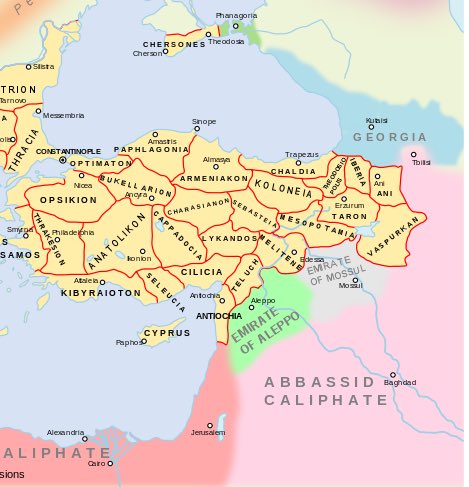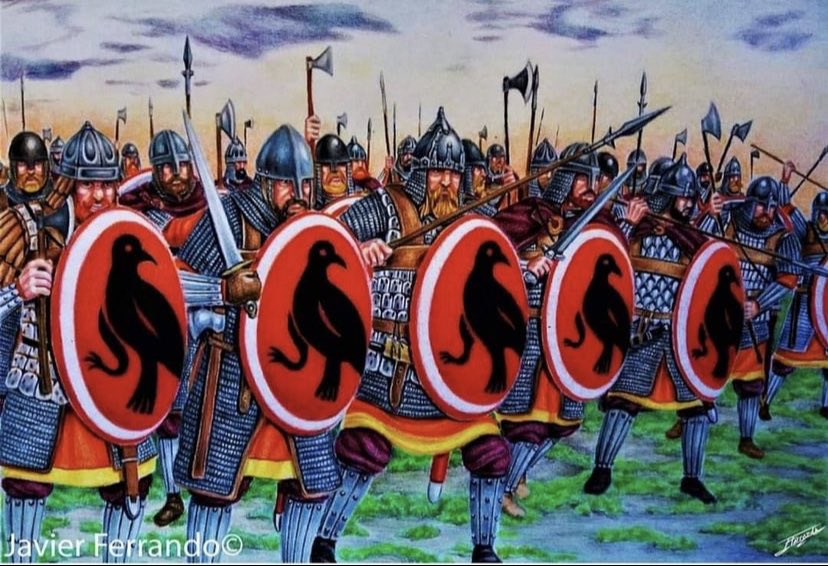After Basil defeated Phokas’s rebellion in 989 he returned his attention to his eternal foe: Bulgaria. However, trouble was brewing in Syria. 

In 992, Manjutakin, the Fatimid governor of Damascus broke his truce with the Byzantine Empire. Manjutakin invaded the Hamdanid Emirate, a Byzantine protectorate, and defeated the doux of Antioch’s army. Manjutakin then raided Antioch’s suburbs and besieged Aleppo.
Aleppo easily resisted the siege and with supplies running low, Manjutakin returned to Damascus in early 993. In 994, Manjutakin returned to the Hamdanid Emirate and crushed another Byzantine army at the Battle of the Orontes. 

Manjutakin tied down the Byzantine force at one of the fords across the Orontes River with his Turkish mercenaries and used the bulk of his force to scatter the Hamdanids at another ford. Once the Hamdanids broke, Manjutakin attacked the Byzantines in the rear and routed them. 

Bourtzes, the doux of Antioch, lost thousands of his 5,000 men at the Orontes. Manjutakin deposed the Hamdanids and set into a siege at Aleppo. The defenders at Aleppo sent increasingly desperate messages to Basil while he wintered in Bulgaria.
These disasters forced Basil to intervene personally. Basil provided each soldier in his army with two mules, one to ride and one to carry his equipment. Basil made the 700 mile march from Bulgaria to Aleppo in an astounding 16 days instead of the usual two months. 

When Manjutakin’s scouts saw Basil’s cavalry approaching the city they couldn’t believe their eyes. Basil’s exhausted army of 17,000 was smaller than Manjutakin’s, but Manjutakin had sent his cavalry away from camp to find pasture, putting him at a disadvantage. 

In a panic, Manjutakin broke the siege and fled to Damascus. Had Manjutakin stayed and fought he would have defeated Basil. Basil’s army was exhausted and many stragglers were still making their way to Aleppo.
Basil, breaking the siege, cancelled Aleppo’s annual tribute for the year in an effort to help the city recover from the grueling year-long siege. Contemporary Muslim sources lauded Basil’s noble leadership for this decision.
While waiting for the rest of the army to arrive, Basil went about destroying Fatimid strongholds that had been placed around Aleppo.
Once Basil’s full force of 40,000 was consolidated, he marched on Apamea, taking the city in a day. Basil also reconquered Homs and various forts for the Hamdanids. 

Basil then moved into Fatimid territory, pillaging their Syrian lands, a task that must have made his Varangians feel at home. 

Bedouin tribesmen the area began attacking Basil’s forces. When Basil’s men captured 40 of them he had their hands cut off. The Bedouins stopped their attacks. 

Basil then moved on his real goal: Tripoli. The Byzantines coveted the Lebanese port city. It’s excellent harbor allowed the Fatimid navy to easily raid the Syrian and Cilician coasts. 

After a month of unsuccessful attempts to breach the city, Basil lifted the siege. On his return to Constantinople he repaired frontier forts and left a garrison of Armenian troops in Tartus. 

Basil’s campaign reasserted Byzantine power and prestige in the region. It was also a warning to the Fatimids that Byzantine protectorates would be defended with the full might of the empire. 

Few accounts of the Varangian contributions to the campaign have survived. However, we can make some inferences to assess their impact on the campaign.
The Byzantine army’s Tagmata, the elite corp of troops, was primarily composed of heavy cavalry. This helped the emperor move his best trained and equipped troops swiftly throughout the empire. 

Heavy cavalry was a dominant force in medieval warfare but after decades of rebellions, Basil did not feel he could trust native soldiers as his crack troops.
Basil also needed heavy infantry to serve as a strategic reserve and anchor for his thematic troops on the battlefield. The heavily armed Varangians filled this need. 

Unwaveringly loyal and experts with axe and sword, the armor-clad Varangians were perfect. We can assume in the Syrian campaign many Varangians protected Basil himself and were present for major events.
The Varangians were also famed for their raids, the Byzantines had learned this from over a century of Rus “smash and grab” campaigns in the Byzantine Empire. 

These tall, blond strangers from Thule must have struck fear into the Fatimid soldiers and civilians of Syria. Many of whom fell under their axes as the Varangians stormed their forts and burned their villages. 

This was the first real campaign the Varangian Guard fought as an official organ of the Byzantine army. As Basil’s reign continues, these veteran troops will play a larger and larger role in his wars.
• • •
Missing some Tweet in this thread? You can try to
force a refresh




















